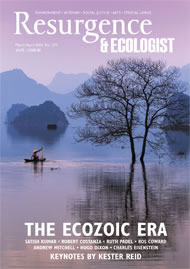We tend not to burn or behead archbishops these days, but the Anglican Church is still capable of making a nuisance of itself, as Rowan Williams knows only too well. There have been rows over the prospect of legalising gay marriage; rows over the appointment (or not) of women bishops; difficulties with handling the vibrant though culturally disparate branches of the Christian faith in Africa and North America.
Narnia is a far cry from all of this. Or so one might think. The magical world created by C.S. Lewis in a series of seven Narnia novels for children has never been out of print, but neither has it avoided controversy. Williams strides into the row, robes flowing, with academic relish.
I am not sure that he does Lewis any favours by doing so. As one might expect from such a distinguished pen, this is a thoughtful and serious book. On one level, it is a contemplation of Christian faith as seen through the prism of Lewis’s undoubted genius at story telling. On another, though, it is a deliberate attempt to argue with people whose views Williams should be happy to ignore, or just live with.
Phillip Pullman, the author of the His Dark Materials trilogy, and other novels clearly influenced – or affected – by Lewis, took time out to excoriate the Narnia novels several times, notably at the Hay Festival in 2002. He was reported in The Guardian as saying that Lewis’s work was “monumentally disparaging of girls and women”. Just for good measure, he added: “It is blatantly racist.” Even
J.K. Rowling (also clearly influenced by the Narnia series) has implied that Lewis was sexist.
Williams deals with these accusations very well. He makes the “boringly obvious” point that Lewis was a male writer in the 1950s. That is an important point to make. Recent scandals involving the behaviour of dead celebrities in the subsequent decade should cause us to reflect on the profound way that public attitudes to gender, race and class have changed. Lewis was undoubtedly a hugely successful writer and an influential Christian thinker, but he was of his time. And, Mr Pullman, who is not?
In the end, though, this book gives too much of an impression of being written in reaction to criticism of the world of Narnia. It is undoubtedly a work of scholarship and affection, but it is defensive and it doesn’t need to be. Does it matter that the lion Aslan (Lewis’s fictional way of depicting divine intervention) is an animal rather than a human? Does it matter whether some animals speak and others don’t? These are just some of the issues with which Williams grapples in his learned and rather tortuous way. He is also exercised by the criticism Lewis has attracted from fundamentalist Christians who don’t like the pagan presence in Narnia of mythical creatures like centaurs, let alone witches. Who would want to be Archbishop of Canterbury?
It’s not a row worth having. Lewis does not need to be defended from his critics, and his critics should have better things to do with their time. The enduring appeal of the Narnia books lies in their ability to create an exciting, vivid, new place in the imagination of all readers of all ages and faiths. Of course the Narnia books are allegorical; but their appeal derives not from any religious purpose, but from great storytelling and a massive sense of adventure. Lewis said: “At first I had very little idea how the story would go. But then suddenly Aslan came bounding into it. I think I had been having a good many dreams about lions about that time. Apart from that, I don’t know where the lion came from or why he came.” They are children’s stories. Perhaps we should look no further.
In any case, which of us will ever forget that moment when, either prompted by the book or by the numerous film and television adaptations, we first went through that wardrobe and entered the magic of Narnia?







